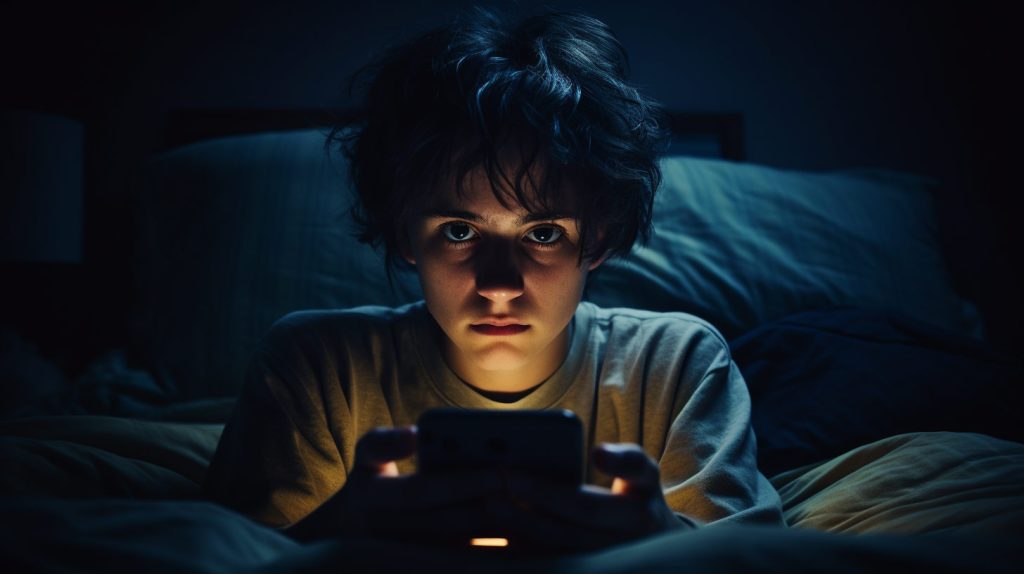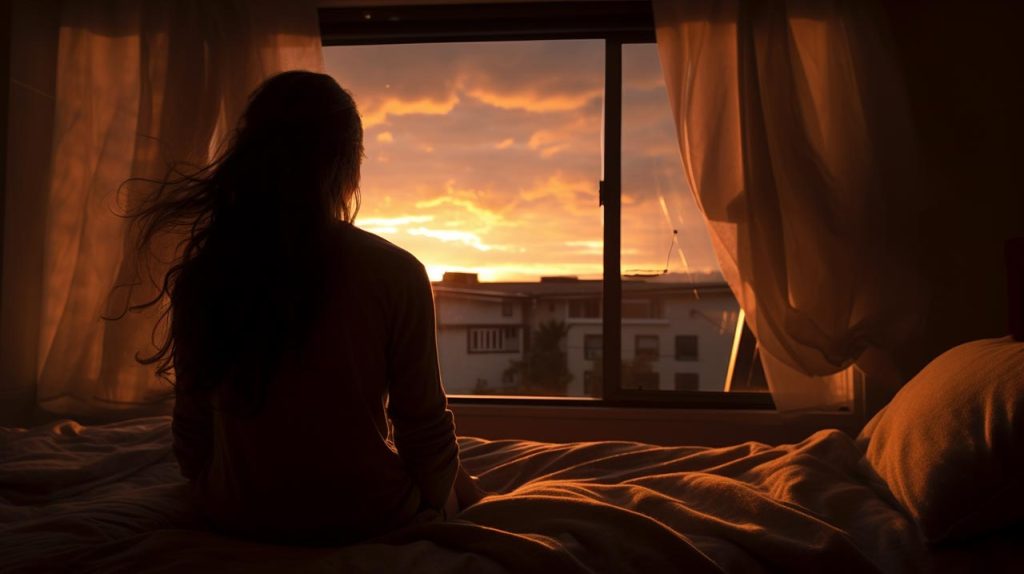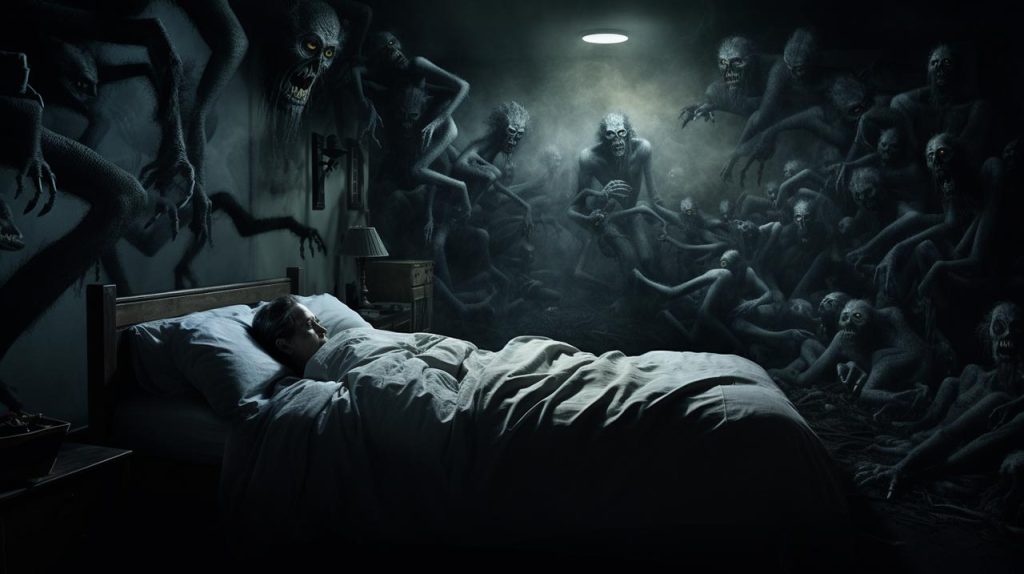
When the average person hears about sleeping problems, the first thing that likely comes to mind is insomnia.
And while it’s true that insomnia is very common — effectively making it the poster child of sleep disorders — there are, unfortunately, plenty of other disorders affecting millions worldwide.
Why should you care? For those who have trouble sleeping at night, in one way or another, it’s a good idea to learn about different sleep disorders. While self-diagnosing has its own limitations, having this knowledge can still point you in the right direction. For instance, you might think you suffer from insomnia, but then you learn about shift work disorder, which might make more sense in your case.
In this article, I’ll present the most common sleep disorders, grouped into six categories. I sourced these categories from the International Classification of Sleep Disorders (ICSD); This way, you know that you’re consulting a standardized system sleep professionals use.
🔎 Do you want to learn about a specific sleep disorder? Click on the name and jump right into it:
▪ Insomnia Disorders: Insomnia
▪ Sleep-Related Breathing Disorders: Sleep Apnea
▪ Central Disorders of Hypersomnolence: Narcolepsy
▪ Circadian Rhythm Sleep-Wake Disorders: Shift Work Disorder, Delayed Sleep Phase
▪ Parasomnias: Sleep-walking, REM Sleep Behavior Disorder, Sleep Paralysis
▪ Sleep-Related Movement Disorders: Restless Legs Syndrome
Here’s a list of the major sleep disorders that belong to the six categories.
1. Insomnia Disorders
This category covers disorders characterized by problems with falling asleep or staying asleep.
1.1 Insomnia
As mentioned previously, insomnia is a very common disorder, affecting the quality, quantity, and most other sleep metrics.
There are three subtypes:
- Sleep onset insomnia: having trouble falling asleep
- Sleep maintenance insomnia: waking up in the middle of the night and being unable to return to sleep quickly.
- Early morning awakening: waking up earlier than expected and not being able to fall asleep again.
People can suffer from one, or a combination, of these three types.
Severity and Prevalence
- About 30-50% of the adult population experience insomnia symptoms
- 15-20% have short-term insomnia lasting less than three months
- 5-15% have chronic insomnia lasting more than three months.
Causes
Insomnia can have various causes, such as:
- Stress
- Anxiety
- Depression
- Medical conditions
- Medications
- Environmental factors
- Geneticsx
Consequences
Insomnia can lead to acute or chronic sleep deprivation, which can have very negative impacts on physical and mental health such as reduced mood and cognitive skills, and a higher risk of developing conditions like diabetes, heart disease, or dementia. Read more about it in this article.
Treatment
👨🏻⚕️ Pro-Tip: If you are looking for a sleep professional to diagnose or treat you, explore Sleep Atlas, our free sleep database, where you can find the right solution to your needs.
- Cognitive Behavioral Therapy for Insomnia (CBT-I): a scientifically proven treatment that uses various methods to improve sleep quality by addressing problematic thoughts and behaviors.
- Prescription drugs: help individuals fall asleep faster or remain asleep longer, but they are not a long-term solution. Read more about them in this article.
- Lifestyle modifications: maintaining a regular sleep-wake schedule, practicing good sleep hygiene, maintaining a balanced diet, and exercising regularly can contribute to improving sleep by itself, and serve as a support for making other interventions more effective.
- Other solutions: besides the steps mentioned above, plenty more can be explored.
2. Sleep-Related Breathing Disorders
This category covers disorders characterized by abnormal breathing patterns during sleep.
2.1 Obstructive Sleep Apnea
This is the most common form of sleep apnea. It occurs when the muscles in the back of the throat relax and block airflow into the lungs. This causes snoring, gasping, and choking sounds during sleep.
Consequences
People with obstructive sleep apnea may experience morning headaches and dry mouth.
Additionally, sleep apnea can lead to acute or chronic sleep deprivation, which can have very negative impacts on physical and mental health such as reduced mood and cognitive skills, and a higher risk of developing conditions like diabetes, heart disease, or dementia. Read more about it in this article.
Diagnosis
Sleep apnea can be diagnosed following a sleep study or an at-home sleep apnea test.
👨🏻⚕️ Pro-Tip: If you are looking for a diagnosis, feel free to explore Sleep Atlas, our online sleep database, where you can find the right sleep professionals for your needs.
Treatment
- Continuous positive airway pressure (CPAP): uses a nightly-worn mask that supplies continuous air to prevent sleep apnea episodes, requiring regular equipment cleaning.
- Bilevel-positive airway pressure (BiPAP): delivers air at different pressures during inhalation and exhalation, making it easier for some people to breathe out against the airflow.
- Auto-adjusting positive airway pressure (APAP): APAP automatically adjusts the air pressure according to the patient’s breathing patterns, providing optimal pressure for each breath.
Q: Why use BiPAP or APAP instead of CPAP?
They may be more suitable for people who have trouble tolerating CPAP or who have other health conditions that affect their breathing.
- Oral appliance therapy: custom-made to adjust jaw or tongue position for better airway access. It can be a less invasive and quieter alternative to PAP devices, though they might not be as effective for severe OSA or those with dental or jaw issues.
- Surgery: removes or reduces excess tissue in the throat or nose that causes airway obstruction. It is usually a treatment option used as a last resort, since it has, like any surgery, risks associated with it. It may not even solve the problem long-term, as the tissue may grow or collapse again over time.
- Lifestyle changes may also help improve symptoms and the effectiveness of other treatments, not to mention their health benefits. Changes that are particularly relevant to sleep apnea are:
- Losing weight if overweight or obese
- Quitting smoking
- Avoiding alcohol and sedatives before bed
- Sleeping on one’s side
- Treating nasal allergies or congestion.
- Other solutions: besides the steps mentioned above, plenty more can be explored.
2.2 Central Sleep Apnea
This is a less common form of sleep apnea. It occurs when the brain fails to send signals to the muscles that control breathing, causing pauses in breathing during sleep.
Like obstructive sleep apnea, people with central sleep apnea may also snore, but unlike the former, they do not usually gasp or choke.
Central Sleep Apnea often affects people with underlying conditions that affect the brainstem (e.g. stroke, brain tumor, infection, or heart failure).
Consequences
People with Central sleep apnea may experience shortness of breath and chest pain.
Additionally, sleep apnea can lead to acute or chronic sleep deprivation, which can have very negative impacts on physical and mental health such as reduced mood and cognitive skills, and a higher risk of developing conditions like diabetes, heart disease, or dementia. Read more about it in this article.
Diagnosis
Sleep apnea can be diagnosed following a sleep study or an at-home sleep apnea test.
Q: Who is Mostly Affected by Sleep Apnea?
It can affect anyone, but it is more common in males, people with excess body weight, pregnant people, and older adults.
Treatment
- Adaptive servo-ventilation (ASV): similar to PAP devices, but not only maintains open airways but also monitors and adjusts to a patient’s breathing rhythm.
- Similarly to obstructive sleep apnea, lifestyle changes may also help improve symptoms and the effectiveness of other treatments, not to mention their health benefits.
3. Central Disorders of Hypersomnolence
This category covers disorders characterized by excessive daytime sleepiness or difficulty staying awake, despite adequate sleep time.
3.1 Narcolepsy
Narcolepsy causes excessive daytime sleepiness, leading to sudden and uncontrollable episodes of falling asleep during the day. This can occur even during activities that require the person to be alert.
Consequences
There are two types of narcolepsy:
- Type 1: involves cataplexy, which is a sudden loss of muscle control triggered by emotions.
- Type 2: does not involve cataplexy.
Narcolepsy can also cause sleep paralysis and hallucinations.
Causes
Narcolepsy is caused by a loss of brain cells that produce hypocretin, which are neuropeptides that regulate wakefulness and REM sleep.
Diagnosis
Narcolepsy can be diagnosed following a sleep study by a sleep specialist and ruling out other conditions.
A blood sample analysis may also conducted to find if you have a genetic marker known as HLA DQB * 0602, which has a strong correlation with narcolepsy, even though it’s not the cause of it.
👨🏻⚕️ Pro-Tip: If you are looking for a diagnosis, feel free to explore Sleep Atlas, our online sleep database, where you can find the right sleep professionals for your needs.
Treatment
Unfortunately, narcolepsy has no cure, but it can be properly managed. The main treatments are:
- Stimulants: drugs like modafinil, armodafinil, and others, are used to help people with narcolepsy stay awake during the day.
- Sodium oxybate: Sodium oxybate is a medication taken to improve sleep quality and reduce daytime sleepiness and cataplexy episodes, but it requires careful monitoring due to serious potential side effects and abuse risk.
- Antidepressants: SSRIs, SNRIs, TCAs, and MAOIs, can help manage cataplexy, hallucinations, and sleep paralysis by suppressing REM sleep in narcolepsy patients.
- Changes in lifestyle and daily habits can help with managing narcolepsy, like:
- Taking short, scheduled naps.
- Following the typical sleep hygiene tips discussed here.
- Avoid nicotine and alcohol, especially at night.
- Inform your employer about your condition and work with them to find the proper accommodations.
- Join a support group to help you cope better.
- Other solutions: besides the steps mentioned above, plenty more can be explored.
4. Circadian Rhythm Sleep-Wake Disorders
This category covers disorders characterized by a mismatch between the individual’s sleep-wake cycle and the environmental or social cues, leading to sleep disruption or misalignment.
4.1 Shift Work Disorder
Shift work disorder is a sleep disorder that affects those working outside the normal daytime hours.
Q: Who is affected the most by Shift Work Disorder❓
The prevalence is higher among night workers, rotating shift workers, and healthcare workers
Consequences
👨🏻⚕️ Pro-Tip: If you are looking for a diagnosis, feel free to explore Sleep Atlas, our online sleep database, where you can find the right sleep professionals for your needs.
Shift work disorder is characterized by:
- Excessive sleepiness during work hours
- Insomnia during off-hours
At work, this condition can degrade performance and safety.
Additionally, Shift Work Disorder can lead to acute or chronic sleep deprivation, which can have very negative impacts on physical and mental health such as reduced mood and cognitive skills, and a higher risk of developing conditions like diabetes, heart disease, or dementia. Read more about it in this article.
Treatment
- Light therapy and light avoidance: Manipulating light exposure, such as using bright light before or during night shifts, and avoiding light when needing to sleep, can help manage the circadian rhythm to stay alert or improve sleep quality.
- Melatonin supplements: Melatonin supplements can assist in adjusting sleep schedules for shift workers and aid in longer and better-quality sleep after a night shift. However, you should read more about this supplement before start taking it.
- Medication: Prescription drugs such as modafinil and armodafinil can help you be alert during the night; sedatives can help you fall asleep during the day. However, they should be used under medical supervision. Click here to learn more about prescription drugs.
- Lifestyle modifications: maintaining a regular sleep-wake schedule, practicing good sleep hygiene, maintaining a balanced diet, and exercising regularly can contribute to improving sleep by itself, and serve as a support for making other interventions more effective.
- Other solutions: besides the steps mentioned above, plenty more can be explored.
4.2 Delayed Sleep Phase
Delayed Sleep Phase Disorder is a circadian rhythm sleep-wake disorder where an individual’s internal body clock is naturally inclined to go to sleep and wake up later than societal norms.

Symptoms
- Difficulty falling asleep at socially accepted bedtime.
- Difficulty waking up in the morning, especially for commitments like school or work.
- Feeling most alert and active during the late evening hours.
- Having no trouble maintaining sleep once asleep.
Consequences
If there are responsibilities that are incompatible with the current circadian rhythm, then a delayed sleep phase can lead to acute or chronic sleep deprivation, which can have very negative impacts on physical and mental health such as reduced mood and cognitive skills, and a higher risk of developing conditions like diabetes, heart disease, or dementia. Read more about it in this article.
Q: Is delayed sleep phase bad ❓
If your current out-of-phase circadian rhythm does not interfere with your other responsibilities and does not induce sleep deprivation and you don’t feel any negative effects, then you will likely be okay.
However, remember that solid correlations have been found between delayed sleep phase and depression and ADHDx, so if you struggle with any of these issues, you might want to change your sleep schedule.
Treatment
Treatment typically involves a combination of interventions aimed at resetting the circadian rhythm:
- Chronotherapy: This method involves progressively delaying bedtime by a few hours each day until reaching the desired sleep schedule, but it can be challenging and not always feasible or successful.
- Light Therapy: Exposure to bright light in the morning can help reset the body’s internal clock. In the evening, the opposite should be done by decreasing exposure to bright light sources..
- Cognitive Behavioral Therapy (CBT): This can help in addressing behaviors and habits that contribute to sleep problems.
👨🏻⚕️ Pro-Tip: If you are looking for a CBT specialist or any other sleep solutions, feel free to explore Sleep Atlas, our online sleep database, where you can find the right sleep professionals for your needs.
- Melatonin supplements: Melatonin supplements can help signal the body that it’s time to sleep. However, you should read more about this supplement before taking it.
- Lifestyle modifications: maintaining a regular sleep-wake schedule, even on weekends, and practicing good sleep hygiene can contribute to a regulated circadian rhythm.
5. Parasomnias
This category covers disorders characterized by undesirable physical or behavioral events that occur during sleep or sleep-wake transitions.
5.1 Sleepwalking
Sleepwalking, also known as somnambulism, involves getting up and walking around while in a state of sleep.
Symptoms:
Typical symptoms of sleep-walking include:
- Walking or performing other complex behaviors while asleep
- Little to no memory of the event
- Sleep talking or shouting
- Difficulty waking the sleepwalker
Causes:
Sleep-walking can be caused by:
- Genetic predisposition
- Sleep deprivation
- Alcohol
- Fever, in children
- Stressx
- Certain sedatives
- Brain Injuryx
Consequences:
Sleepwalking can lead to potential injuries as the person is unaware of their surroundings.
Treatment:
Most cases occur rarely and resolve themselves over time, so they don’t require treatment. If that’s not the case, the best course of action is to consult a sleep specialist with experience with parasomnias.
👨🏻⚕️ Pro-Tip: If you are looking for a sleep specialist that knows how to treat parasomias? Feel free to explore Sleep Atlas, our free online sleep database, where you can find the right sleep professionals for your needs.
Precautions
Precautions might include:
- Installing gates or locks
- Removing obstacles in the room
5.2 REM Sleep Behavior Disorder
REM Sleep Behavior Disorder is a condition where the paralysis that usually restricts people while they dream, doesn’t occur. This results in the individuals actually acting out their dreams in the physical world.
Symptoms
People with REM Sleep Behavior Disorder might punch, kick, jump, and perform similar actions. They will do this in an unconscious manner and not be aware at all that they are doing it.
Causes
The cause of Rapid Eye Movement sleep behavior disorder is not well understood at this point, but it is believed to be related to disruptions in brain neural pathways. It’s often associated with Parkinson’s disease, Lewy body dementia, and multiple system atrophy.
Q: Who is more likely to suffer from REM Sleep Behavior Disorder ❓
Males over 50 years old, suffering from neurological disorders, users of certain medications or substance use.
Consequences
The most problematic issue with this disorder is physical harm— either to oneself or to a partner.
Diagnosis
REM Sleep Behavior Disorder can be diagnosed following a sleep study by a sleep specialist after it’s confirmed that the incident occurs during the REM phase of sleep.
👨🏻⚕️ Pro-Tip: If you are looking for a sleep specialist that knows how to treat REM Sleep Behavior Disorder? Feel free to explore Sleep Atlas, our free online sleep database, where you can find the right sleep professionals for your needs.
Treatment
Treatment for REM Sleep Behavior Disorder can include:
- Clonazepam: this prescription drug has been proven very helpful in reducing REM Sleep Behavior Disorderx, however, just like all prescription drugs, it can have undesirable side effects. It is also not recommended for long-term use, since it can cause cognitive decline and dementiax
- Melatonin: this supplement has also been suggested as a safer alternative to Clonazepamx. However, you should read more about this supplement before taking it.
- Lifestyle changes: If certain aspects of your lifestyle or behavior are identified as causes of your sleep condition (e.g., medication or substance use), they must be stopped.
Prevention
The consensus among sleep specialists is that, regardless of treatment, the most pressing action to take when dealing with this disorder is to modify the bedroom to reduce the chances of injury during an episode.
This paperx suggests the following actions:
- Placing a mattress on the floor
- Padding corners of furniture
- Window protection
- Removing potentially dangerous objects, such as guns or sharp objects, from the bedroom.
- For the safety of your partner, it’s probably a good idea for them to sleep in a different room until the symptoms are controlled.
5.3 Sleep Paralysis
Sleep paralysis is a parasomnia that happens when someone wakes up from a REM sleep cycle but their body is still paralyzed (this paralysis is otherwise normal during REM sleep, to prevent them from acting out their dreams physically).
Symptoms
The symptoms of this sleep disorder are typically the following:
- Atonia (i.e. the inability to move the body or speak)
- Hallucinations such as the presence of a demonic or otherwise terrifying entity in the room. These hallucinations can involve any of the five senses. They are typically archetypal in nature, with many people reporting seeing similar figures, including lovely characters like the Night Hag, the Hat Man, or the Incubus / Succubus (usually felt as a weight on the chest).
- Fear and Panic.

Causes and Risk Factors
The exact cause of sleep paralysis remains elusive, but several factors have been associated with its onset:
- Lucid Dreaming: It is known that people who engage or try to engage in lucid dreaming run a higher risk of experiencing sleep paralysis since both conditions are related to being conscious during REM sleepx
- Obstructive sleep apnea is correlated with higher incidences of sleep paralysisx.
- Suffering from insomnia symptoms is also correlated with higher incidences of sleep paralysisx.
- Unsurprisingly, mental conditions like PTSD — but also panic disorder, social phobia, and generalized anxiety disorder — are associated with higher rates of sleep paralysisx.
Complications
Depending on the individual, experiencing sleep paralysis can be a somewhat traumatic event, which can create a pattern of associating sleeping with stress and anxiety.
This can lead to acute or chronic sleep deprivation, which can have very negative impacts on physical and mental health such as reduced mood and cognitive skills, and a higher risk of developing conditions like diabetes, heart disease, or dementia. Read more about it in this article.
Treatment
The treatment of sleep paralysis will depend on what is causing it.
- If the cause is voluntary engagement with lucid dreaming activities, ceasing them will likely stop the sleep paralysis.
- If the cause is related to another sleep disorder, the treatment will be the same as mentioned under the Treatment section of that respective disorder, located elsewhere in this article.
- If the cause is a mental health issue, there are multiple scientifically proven methods to improve it, like cognitive behavioral therapy or psychotherapy.
6. Sleep-Related Movement Disorders
Repetitive movements that interfere with sleep quality or quantity
6.1. Restless Legs Syndrome
Restless Legs Syndrome (RLS) is a disorder characterized by an irresistible urge to move the legs, especially at night or when resting.
Causes
Restless Legs Syndrome can occur due to a wide variety of reasons:
- Iron Deficiency
- Dopamine Imbalance
- Genetics
- Pregnancy
- Some medications, which can include:
- Antidepressants
- Antipsychotics
- Lithium
- Antihistamines
- Other health conditions:
- Chronic kidney disease
- Diabetes
- Parkinson’s disease
- Rheumatoid arthritis
- Underactive thyroid
- Fibromyalgia
- Nerve damage in legs
- Lifestyle:
- Diet
- Stress
- Lack of exercise
- Weight
Consequences
Restless Leg Syndrome can lead to acute or chronic sleep deprivation, which can have very negative impacts on physical and mental health such as reduced mood and cognitive skills, and a higher risk of developing conditions like diabetes, heart disease, or dementia. Read more about it in this article.
Treatment
There are different treatment strategies for RLS, depending on the severity and the cause of the symptoms. Some of the most common treatment options are:
- Iron supplements: taking iron supplements may help RLS, but should only be done under medical supervision after checking blood iron levels.
- Medications: these include dopamine agonists, with potential side effects that include worsening symptoms due to long-term use.
- Lifestyle changes: Simple lifestyle changes can help alleviate the symptoms of RLS, such as improving sleep hygiene, and diet, exercising regularly, soaking in a warm bath, massaging the legs, applying warm or cool packs, using a foot wrap or a vibrating pad, or doing leg stretches or movements.
- Other solutions: besides the steps mentioned above, plenty more can be explored.
Conclusion
In this article, we’ve explored how sleep disorders can affect someone.
It’s always a good idea to be properly informed about these disorders to recognize their symptoms and seek the appropriate treatments.
Here’s one final overview, for your reference:
| Category | Description | Examples |
|---|---|---|
| Insomnia Disorders | Problems with falling or staying asleep | Insomnia |
| Sleep-Related Breathing Disorders | Abnormal breathing patterns during sleep | Sleep Apnea |
| Central Disorders of Hypersomnolence | Excessive daytime sleepiness or difficulty staying awake | Narcolepsy |
| Circadian Rhythm Sleep-Wake Disorders | Mismatch between sleep-wake cycle and environmental cues | Shift Work Disorder, Delayed Sleep Phase |
| Parasomnias | Undesirable events during sleep or sleep-wake transitions | Sleep-walking, REM Sleep Behavior Disorder, Sleep Paralysis |
| Sleep-Related Movement Disorders | Repetitive movements affecting sleep quality | Restless Legs Syndrome |
🌙 If you enjoy sleep-related content, join our community! Subscribe to our newsletter, follow us on your favorite social media, and join us for a real-time chat on Discord ☀
